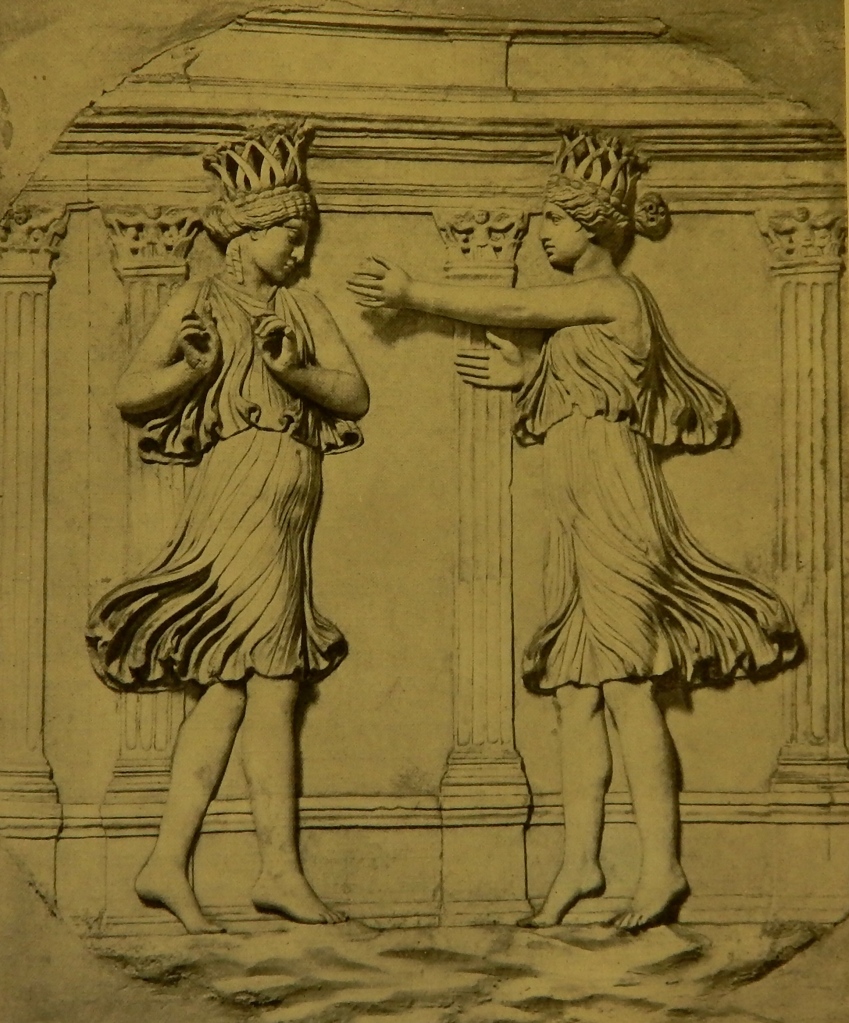

Pantomime: The History and Metamorphosis of a Theatrical Ideology
This book by Karl Toepfer offers the most comprehensive history of pantomime ever written. No other book so thoroughly examines the varieties of pantomimic performance from the early Roman Empire, when the term “pantomime” came into use, until the present. After thoroughly examining the complexities and startlingly imaginative performance strategies of Roman pantomime, the author identifies the peculiar political circumstances that revived and shaped pantomime in France and Austria in the eighteenth century, leading to the Pierrot obsession in the nineteenth century. Modernist aesthetics awakened a huge, highly diverse fascination with pantomime. The book explores an extraordinary variety of modernist and postmodern approaches to pantomime in Germany, Austria, France, numerous countries of Eastern Europe, Russia, Scandinavia, Spain, Belgium, The Netherlands, Chile, England, and The United States. Making use of many performance and historical documents never before included in pantomime histories, the book also discusses pantomime’s messy relation to dance, its peculiar uses of music, its “modernization” through silent film aesthetics, and the extent to which writers, performers, or directors are “authors” of pantomimes. Just as importantly, the book explains why, more than any other performance medium, pantomime allows the spectator to see the body as the agent of narrative action.
1300 pages, over 200 illustrations.
Release Date: August 2019
The book is available for free as a PDF download from this website.
“Karl Toepfer’s book on the history of pantomime is an admirable work, both for the breadth and the depth of its scholarship. Most publication on the subject is derivative or shallow or both. Prof. Toepfer has gone to the sources and brought a lifetime of experience as both a scholar and a performer to bear. His polyglot awareness of the multicultural aspects of pantomime outdoes any previous efforts, and demonstrates how theatrical pantomime has influenced many artistic movements. His inquiring mind sifts his data for their constituent ideas and provides subtle and persuasive analyses of them. This book is unique in its comprehensiveness and intellectual acumen . . .”
— Laurence Senelick, Fletcher Professor of Drama and Oratory, Tufts University; Fellow of The American Academy of Arts and Sciences
Read the book online here.
Download a PDF of the book at no cost here. The PDF is the best way to read the book or cite any statements from it. It is a large file (152MB) and takes a couple of minutes to access.
Table of Contents

Why Is the Book Being Distributed to Readers for Free?
Pantomime: The History and Metamorphosis of a Theatrical Ideology is a scholarly work that took many years to write. In the current academic publishing environment, it is extremely difficult to find a publisher with the resources to publish a printed book of this size and scope. Only reference works, encyclopedic compilations occasionally justify the publication of printed books as large as this one. A single-authored work of this size requires an author personality of equally grand dimensions, but unfortunately such a personality no longer seems to exist in the realm of scholarly activity, and in any case the author of this book is utterly lacking in celebrity status, in even holding some distinguished chair at one of the handful of very prestigious research universities in the world. Nevertheless, I submitted the book to various academic publishers with the largest resources and highest standards: Harvard, Yale, Oxford, Cambridge, Routledge, University of California, MIT, Bloomsbury. Those that bothered to reply said the book was much too big for them to consider publishing. One publisher suggested cutting the book in half and publishing the rest as a series of smaller books that treated aspects of pantomime history in isolation from each other. The publishers responded to the prospectus, especially to the table of contents, which listed page numbers for chapters; no one actually read the book. It was my hope that by pursuing a traditional path to scholarly publication, the book might benefit from responses, commentary, suggestions, and even endorsements from scholars other than those who have already helped me. That was probably too much to expect in relation to a book of this size. Still, while I don’t have much doubt about the scholarly seriousness, credibility, and argumentation of my work, it is disheartening to realize that the size of the text alone is the sole, intimidating reason for not publishing and not reading it.

However, Pantomime is not a book that one must read in linear fashion, from beginning to end, even though I wrote it according to a linear, chronological structure and I wrote in a style that I hoped was accessible enough to sustain the reader’s attention across lengthy linear spans. It is a book that one wanders through in different places, according to different motives and moods. I am very fond of printed books when they are well made, pleasurable things to hold and behold. But in this era of digital technologies, printed books are not the most efficient and effective way to distribute knowledge. In the academic world, the assumption persists, especially in the humanities disciplines, that knowledge is worth distributing only if an academic publisher risks some heap of capital in producing and marketing a bound and printed book containing the knowledge. But when the scope of the book became evident to me, my intention was to see “publication” above all in terms of a digital format and to build the book around digital capabilites that are usually not avaliable to printed books. However, even the most prestigious academic publishers remain entirely committed to publishing print versions of their titles for reasons that have nothing to do with maintaining quality of scholarship or reaching reader audiences. Printed academic books have become enormously expensive, and almost no one in academia actually buys them unless professors compel their students to order them from Amazon. The “audience” for most academic books is university research libraries, where the vast majority of academic books sit on shelves untouched, often for decades, not because they aren’t worth reading, but because the motive for reading them has become obscured by the huge cost of knowing they exist and why: most likely you have to be enrolled in a graduate program or have received a graduate degree in a particular field to know the existence of manifold, huge categories of academic books, and even most graduate students, when entering a vast research library, become awed by how much they have not read and will never read even in their own fields. It’s possible that most of the people who actually read the academic books released by academic presses are reviewers of the books in professional journals, and these readers rarely buy the books they review. The whole point of academic publishing, especially in relation to humanities subjects, seems to be to make it difficult and expensive to obtain knowledge under the assumption that knowledge is valuable and trustworthy when it costs a lot to package and distribute.

Digital publication offers many advantages over print publication. One obvious advantage is mobility, especially in regard to a big book. The size of the book does not seriously determine the cost of the book. The difference between 60 pages and 1300 pages does not make much difference to the cost of packaging and distributing a text in a digital format; it makes a difference only to the time the reader has to spare on the text. Digital formatting allows for far more illustrations than any print format, and color illustrations are scarcely a problem for digital publication, whereas they are invariably a problem for academic publishers. In the digital format, the reader can enlarge images. Digital books do not require expensive indexes, because the internal search bar allows the reader to introduce any keyword. Of course, a huge book (along with many other digitized books) will travel conveniently with almost any mobile device, so that the reader may always have the book at hand when it is useful to consult it.

But the benefits of digital publication extend beyond author and reader conveniences. Digital publication carries with it a political dimension, the implication that the distribution of scholarly knowledge should change. The distribution should change not only to make access to scholarly knowledge cheaper, more convenient, and more mobile; it should also change to make scholarly knowledge less costly in the consumption of resources and labor. If we are to take global warming as a serious threat to the planet, if we are to achieve a more responsible ecological management of the planet, then we should take seriously the digital publication of scholarship. We do not need to harvest forests for paper on which to print scholarly knowledge. We do not need to spend money on the design and binding of printed scholarly books; we do not need to spend money on the warehousing of books or on the transportation of the books to bookstores or consumers; we do not need to spend money transporting ourselves to bookstores, assuming bookstores even carry scholarly titles, and we do not need to spend money assessing what inventory is “excessive” and what should be reprinted. Without all these expenses, the costs of books would drop precipitously. But of course, these expenses do benefit the publishers and the subsidiary industries involved in the production of printed books. These expenses allow publishers to inflate the price of books, which in turn enlarges the cash flow that allows the publishers to sustain payrolls and overhead. That is why publishers do not want to publish a digital version of a scholarly work without publishing a printed version and why publishers charge the same or almost the same for the digital version. It is as if the point of publishing printed versions of scholarly works is to subsidize an institutionalized mode of knowledge distribution that is no longer necessary and even an obstacle to the release of knowledge. It is certainly not to subsidize scholarly research itself, for the pitiful royalties that academic publishers grant authors never cover the costs, financial and otherwise, of producing publishable scholarship. Indeed, digital publication should actually expand the royalty percentage that authors receive for their work. In Europe, a book the size of Pantomime might find a publisher through subsidies granted from a wealthy sponsor, such as a bank, a tire manufacturer, or a brewer. In the United States, corporate sponsors seem to enjoy subsidizing luxurious art books in partnership with art museums, but I have no idea how to engage them in support of a scholarly project with a single author who has no affiliation with a large public museum. And anyway, American academic publishers, for entirely sensible reasons, seem intensely reluctant to let the knowledge they publish become dependent on corporate sponsorship. But even mentioning corporate sponsorship of printed books merely emphasizes the point that the printing of even modest-scaled scholarly books is a matter of producing luxury goods for the truly tiny number of scholars who actually buy them and the relatively few research libraries with budgets large enough to put the printed versions on the shelves.

At any rate, the point of publishing Pantomime as a printed book is to generate revenue for someone other than the author. And indeed, if you want to read the book on an e-reader, such as Kindle, you have to pay a relatively modest price for this convenience, because the e-reader format operates in conjunction with a corporate provider, such as Amazon, that expects consumers to pay some fee toward the cost of maintaining the e-reader technology. But e-readers like Kindle do not provide page numbers, which makes it difficult to cite information for scholarly purposes. That is why I am providing a free PDF version of the book: it contains page numbers, and the PDF version is aesthetically more satisfying to read. I suppose I could charge some modest fee for the PDF version, but then I would have to set up a payment operation and pay taxes on whatever revenue the PDF version generated. As non-profit organizations, university presses do not have to pay taxes. I do. Charging for a PDF version of the book would, in effect, end up with me paying readers to download my book insofar as to make the book affordable to most readers, I would have to pay more in taxes and payment format fees than an optimally “affordable” price for the book allows. Moreover, an ethical issue arises in relation to a purchase price for a scholarly book. The research on pantomime was possible because of money provided by the state of California and the Federal government (NEH). That is, taxpayer money has supported the project, and I do feel that when public money supports scholarly research, then the public should have access to that research, that the public has already paid for that access. This thinking already prevails in relation to the National Science Foundation and other grant-giving science agencies of the Federal government, as it does in Canada, the European Union, and some other countries, where every dissertation at a public university must be made available for free online. But in the humanities, the perception persists that high prices for scholarly books is compensation for the public’s inability to value humanities scholarship seriously enough; it’s almost as if high prices for scholarly books is a way to punish the public for not giving more in the way of taxes to sustain the salary or quality of life requirements of scholars, as if the distinction and exclusivity of humanities knowledge depended now on the purchase price for obtaining that knowledge through printed books.

I wanted a major scholarly publisher to publish Pantomime as a digital book so that the book would receive a greater level of editorial scrutiny than I have already given it. A scholarly publisher can secure endorsements from distinguished academics whom I personally do not know. The publishers of professional journals do not seem to review books unless they come to the journals as printed and bound tomes, although, as assessors of scholarship, there is no reason why journals should not review PDFs, except that if you start reviewing PDFs, then you start to question why the field is still producing printed books mostly to bolster the book printing industry and to sustain the illusion within academic departments that costly printed books are proof that knowledge has been properly vetted before being released to the “discipline” (can one really say with a straight face “before being released to the market or even the public”?). Some people might argue that printed books have a durability that digital products lack. Websites come and go with great rapidity, but books supposedly sit on library shelves for centuries, oblivious to the perpetual “disruptions” of the digital era, even though libraries nowadays acquire vast numbers of books exclusively in digital formats, precisely because digital books do not take up diminishing shelf space and because so many library patrons prefer to read books in digital formats. Already, with entities like Google Books and the Internet Archive, millions of printed books are accessible, as digital objects, to a far greater degree than was possible before the invention of the internet. Even libraries now question whether their primary purpose is to store printed versions of books. Digital formats like PDF are no less durable than printed books insofar as they are so easy to reproduce and proliferate.

To say, without actually having read my book, that it is “too big” to publish even in digital format is to imply that pantomime history is not big enough to demand the time and attention it takes to read the thing. Well, perhaps it is too big; probably any book is too big if you think the subject is not big enough. What I have tried to show is that the history of pantomime is a much bigger, more complex, and more important subject than any previous history of performance has acknowledged. The book argues that ideological pressures on consciousness cause people to think that pantomime is a “small” subject requiring a much more modest account than I have provided. This question: How is it that people may think of pantomime as a “small” subject?–is a question that entails examining the ideological apparatus that controls the mind’s capacity to discern the “bigness” of subjects. The “bigness” of pantomime isn’t really clear unless you produce a comprehensive history of it, something that is perhaps larger than a reader can absorb. You don’t get this sense of pantomime’s artistic power if you break up its history into modest, discrete little monographs that, assuming the reader even buys all of them, cost the reader much more than a single, unified text, even if printed and bound. The history of pantomime is the history of how people, in Western civilization, have used human bodies to construct narratives through the performance of physical actions. It is a unique way of seeing what the body “tells” that cannot be told through speech or dance movements. It is a way of seeing the body’s communicative power that, for ideological reasons, speech and dance prevent us from seeing. That is not a small subject.
“On the Use of Google Translate in Writing a History of Pantomime,” a small paper related to the writing of the pantomime book presented at the West Coast Germanists Workshop, University of California Davis, March 17, 2018.

